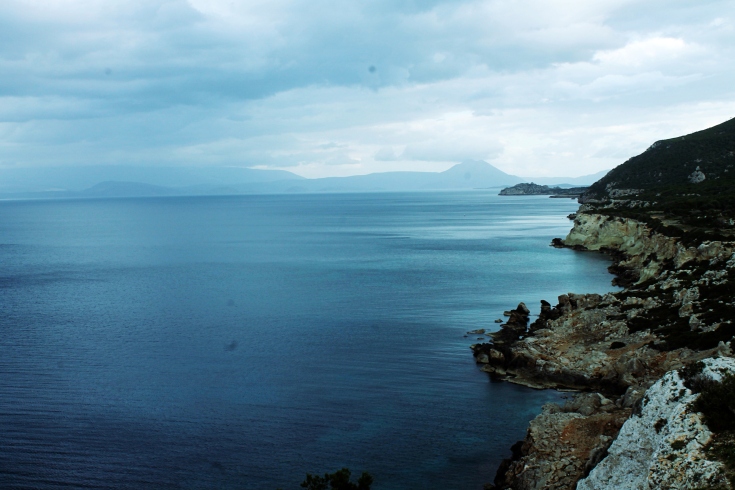Tell me your secrets, Mountain. Why do I feel so attracted to you? Why do I feel the need of climbing your wall, risking of falling at every step, just to stand on your head for a moment, before going down, to the valley, again? What is this feeling? This obsession of mine? Tell me your secrets, Mountain. Why are you so beautiful? Why do I love your silence?
According to the myth, Medea buried her dead children at the Heraion of Perachora, the temple dedicated to Hera build on a small cove of the Perachora peninsula, on the Gulf of Corinth. The place is a doozy. The remains of the temple are scattered on a natural cove, shaped as an amphitheater. There is a small beach surrounded by the sea stacks, almost protected by the reef all around. The remains of the temples and the villas with bathing pools and fountains are hidden into a small bay facing the Corinth Gulf and looking at the coast of Peloponnesus, peaking among the distance on the other side. During a bright day of sun, from the lighthouse, at the top of the cape, one could see the Corinth’s canal and the cargo ships approaching it slowly, as a black spot on the silver sea.

If the myth talks about Medea, the history of the place tells a different tale. The site, that was composed by more than one temple and had an Oracle as well, was built around the 9 century BC and destroyed by Romans in the II century BC when general Mummius sacked Corinth during the war with the Achaean League.
Many things changed since then. Not the beauty. The view is breathtaking. The cape is a rocky line of rock scattered with green spots, and slotted in the sea. In front of me, I can see it climbing down until the bay and rising again, up to its very end, where a lighthouse is fighting alone – a tiny thing against the cloudy sky – with the roaring waves that down are screaming at the reef like blind harpies left to die on the foreshore. The coast, sharped and jagged, disappears in the distance, joining Attica and Peloponnesus, somewhere behind the horizon. A small staircase climbs down, following a line of cluster pines and cedarwoods, spaced out by small wooden rims, overlooking the bay.

Everything is perfect, I feel I am standing in one of those places where is almost impossible taking a bad picture. The postcard landscape is doing the trick. After walking up and down the cape, we challenge ourselves with the mountain behind. In Greece as in Italy, Christians built churches and monastery wherever there was a pagan site. This is no exception. Sheltered among two mountain’s pinnacles the small church of Saint Nicholas is a white spot against the gray of the stones. The climb is not long: 3 km, from the parking lot to the sanctuary and back. Short, but hard. Some parts need to be done climbing, using the hands and whatever the mountain offers. Even bushes of thorns or dry pieces of deadwood. But as always, the starting is pleasant: a small path sneaking into a forest of cluster pines and bushes.
After climbing up, the weather turns bad. The rain is approaching. We go back to the cars and stop in Loutraki, for an early dinner.

The day is over and while we are going back to Athens, facing the rain and the air getting colder, my mind runs to Medea. I imagine her bending among the rocks of Perachora, burying something, deep in the ground. Maybe she was covering the bodies of her own kids, as the legend says. But maybe, just maybe, what she was letting go, was a part of her own soul. The naive, childish smile of her inner girl. She buried it, letting it goes, to become a woman, a queen, and a witch, ready to do whatever it would have taken, to survive and thrive.
Love
V@g





Leave a comment